Chicken Cacciatore
This post may contain affiliate links. Read my full disclosure policy.
A rustic, slow-cooked dish of tender chicken and vegetables in a hearty sauce, chicken cacciatore makes a soul-satisfying meal.
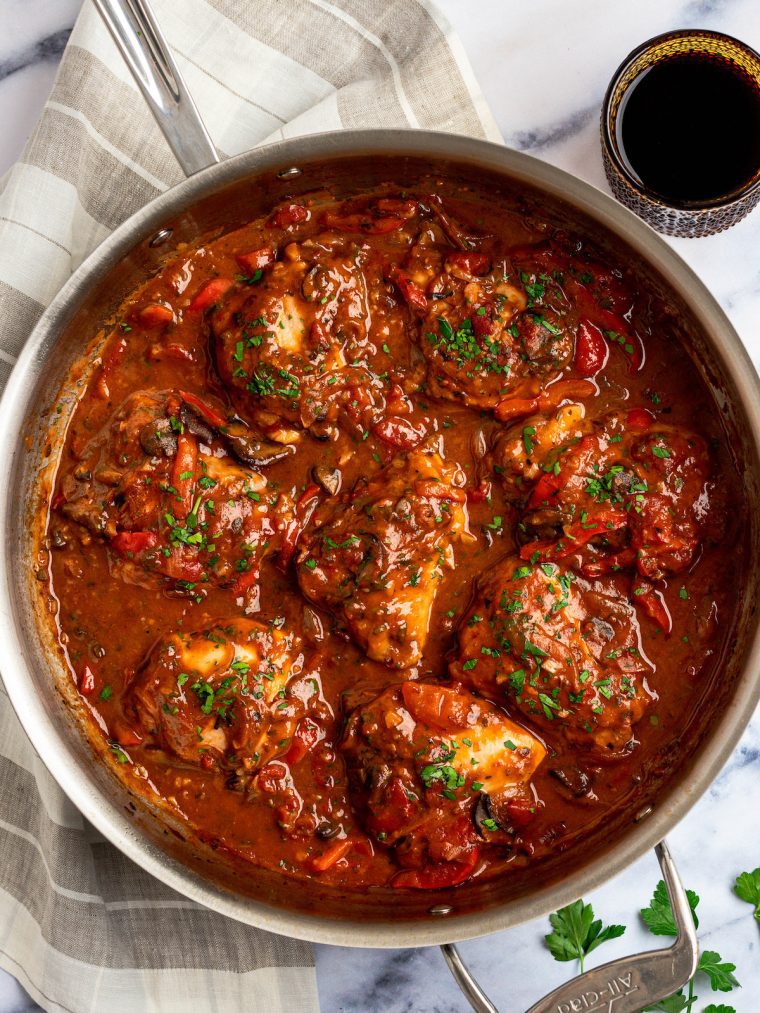
Chicken Cacciatore, also known as Hunter’s Chicken, is a classic Italian dish that’s packed with rich, bold flavors. The name “cacciatore” comes from the Italian word for hunter, and it is said to have originated with Italian hunters who would prepare it over an open fire using ingredients they had on hand, such as tomatoes, onions, garlic, and peppers. This recipe calls for chicken thighs to be slow-cooked with these veggies, along with fragrant herbs, red wine, and broth to create a hearty sauce that’s perfect for spooning over creamy polenta or Parmesan smashed potatoes.
Chicken cacciatore takes about 2 hours to cook, so make it on a leisurely day when you’ve got some time to putter around the kitchen. It’s also a wonderful dish to make ahead of time, as the flavors develop and deepen as it sits.
Table of Contents
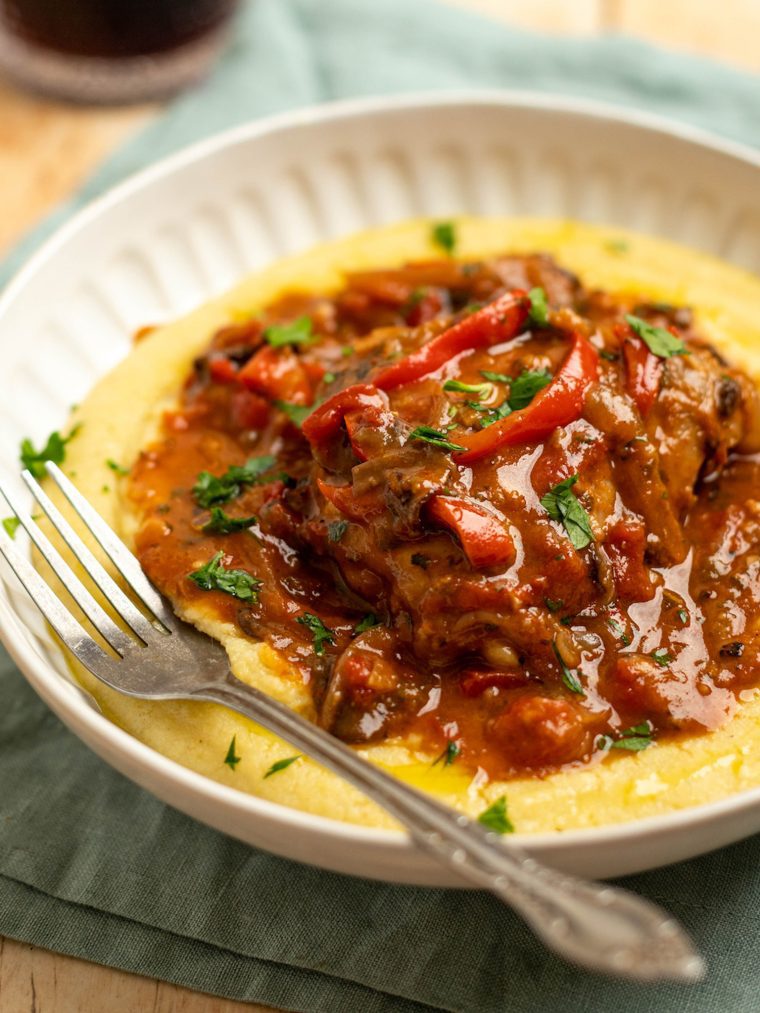
“Made this for dinner last night with friends. Followed the recipe exactly as written and served over polenta. Outstanding!!!”
What You’ll Need To Make Chicken Cacciatore
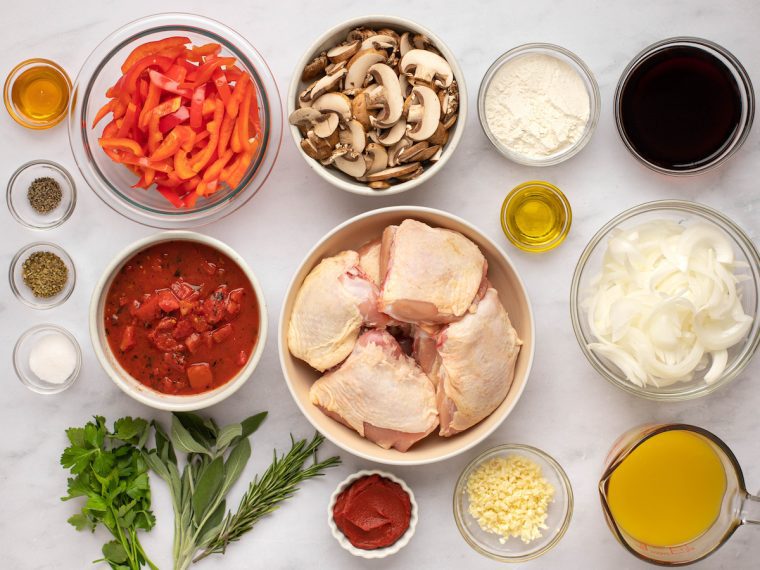
- Chicken Thighs: Bone-in, skin-on pieces are ideal, as the bones and skin add depth and flavor to the sauce as they simmer.
- All-Purpose Flour: Used for coating the chicken before searing and helps thicken the sauce.
- Olive Oil: Used for sautéing the chicken and vegetables, adding a rich flavor to the dish.
- Onion and Garlic: Form the aromatic base of the sauce.
- Mushrooms and Bell Peppers: Add texture and earthy flavor to the dish.
- Red Wine: Enhances the sauce with a robust and fruity undertone.
- Chicken Broth: Provides a savory liquid base for the sauce, adding depth and richness.
- Canned Diced Tomatoes: Bring a bright and tangy tomato flavor to the sauce.
- Tomato Paste: Thickens the sauce and intensifies the tomato flavor.
- Sage, Rosemary, Oregano, Parsley: An aromatic blend of herbs that infuses the dish with a fragrant and savory character.
- Honey: Adds a touch of sweetness to balance the acidity of the tomatoes and wine.
- Jump to the printable recipe for precise measurements
Step-by-Step Instructions
Blot the chicken with a paper towel to remove any excess moisture. Season the chicken all over with 1½ teaspoons salt and ½ teaspoon pepper.
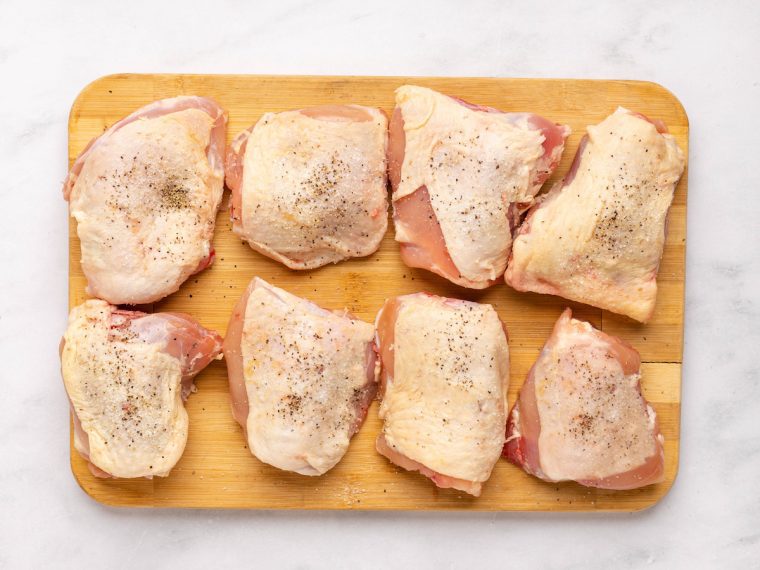
Place the flour on a large plate. Dredge the chicken pieces in the flour, coating all over.
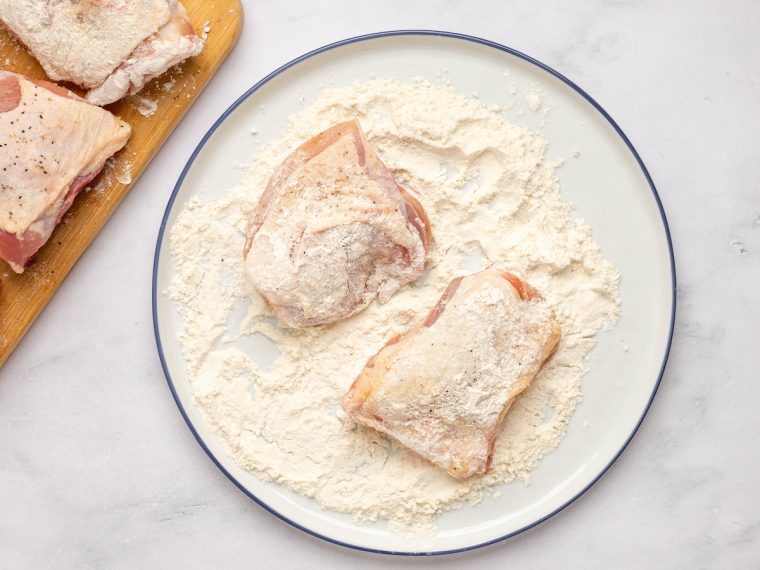
Heat the oil in a large (5 or 6-qt) Dutch oven or heavy-bottomed, high-sided large skillet over medium-high heat. Brown half the chicken in a single layer, skin side down, until golden and crispy, 5 to 7 minutes. Flip and brown on the other side for 1 to 2 minutes more.
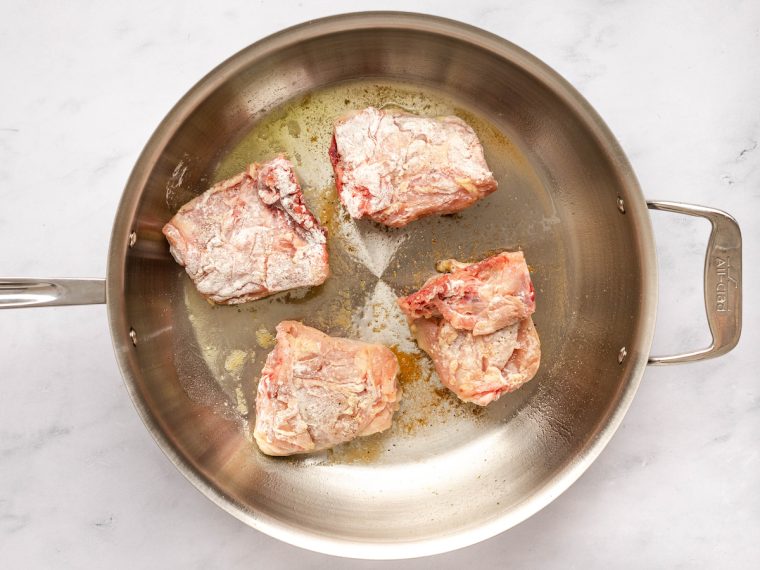
Using tongs, transfer the chicken to a large plate; set aside.
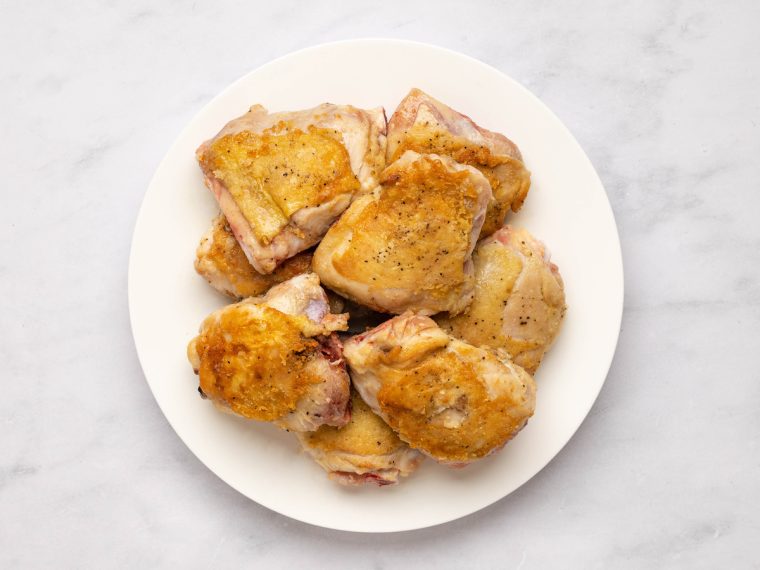
Repeat with the remaining chicken. Pour off all but about 2 tablespoons of the fat. Return the pot to the stove and reduce the heat to medium-low. Add the onions to the pot and cook, stirring occasionally, until they are softened and just starting to brown, about 5 minutes. Add the garlic and cook, stirring constantly, until fragrant, about 1 minute. Do not brown.
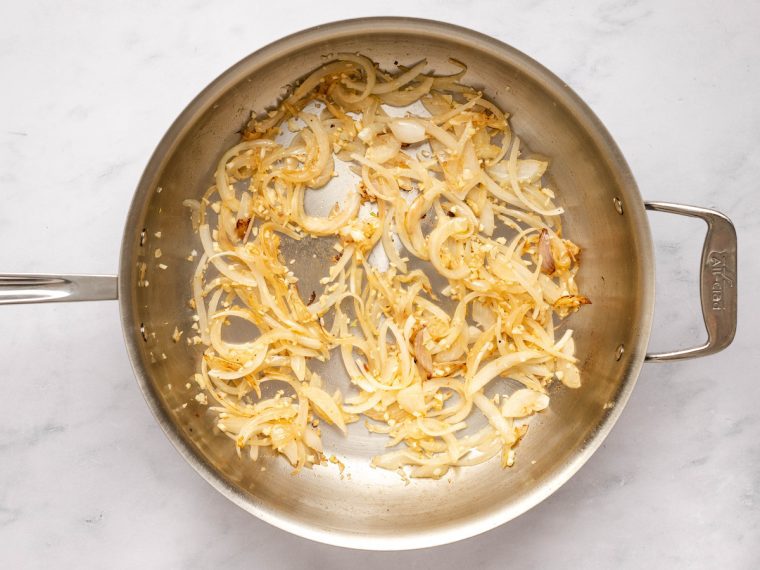
Add the mushrooms and peppers and increase the heat to medium. Cook for 5 minutes, stirring occasionally until the veggies just begin to soften.
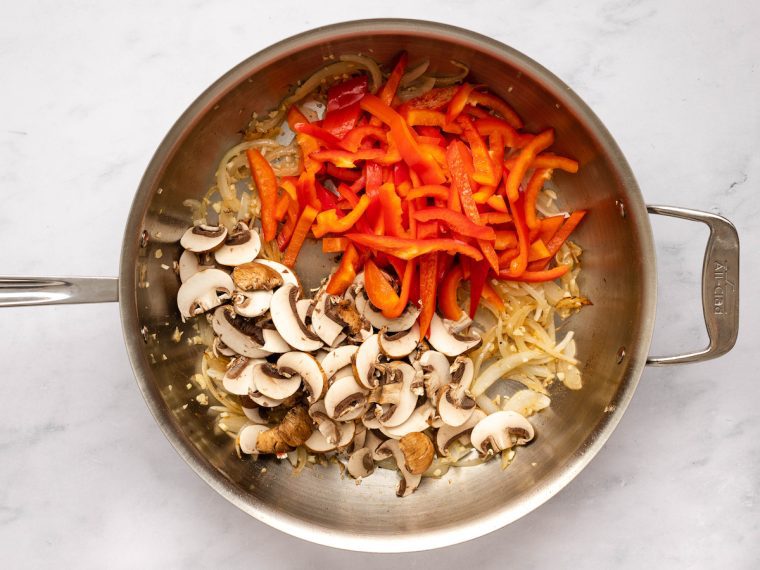
Add the wine and bring to a boil over high heat.
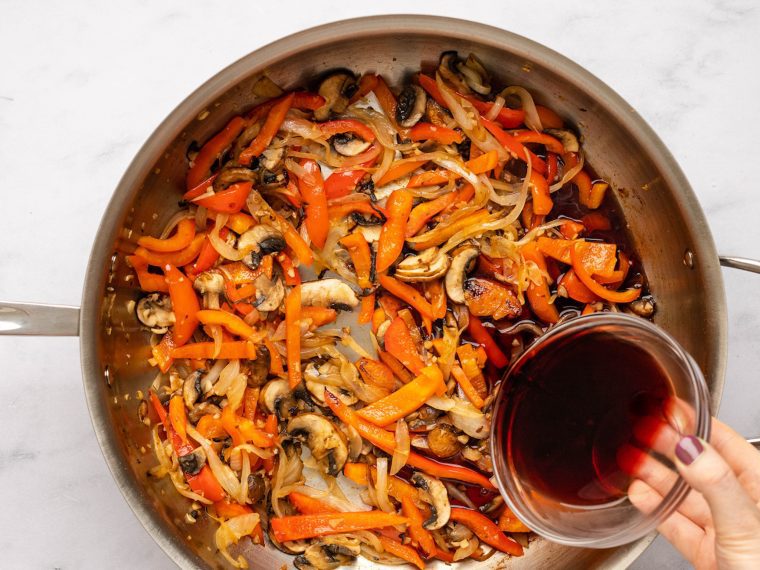
Cook, stirring to scrape the brown bits from the bottom of the pan, until the wine has mostly evaporated, 5 to 6 minutes. Add the chicken broth, diced tomatoes, tomato paste, sage, rosemary, oregano, honey, and the remaining 1 teaspoon salt.
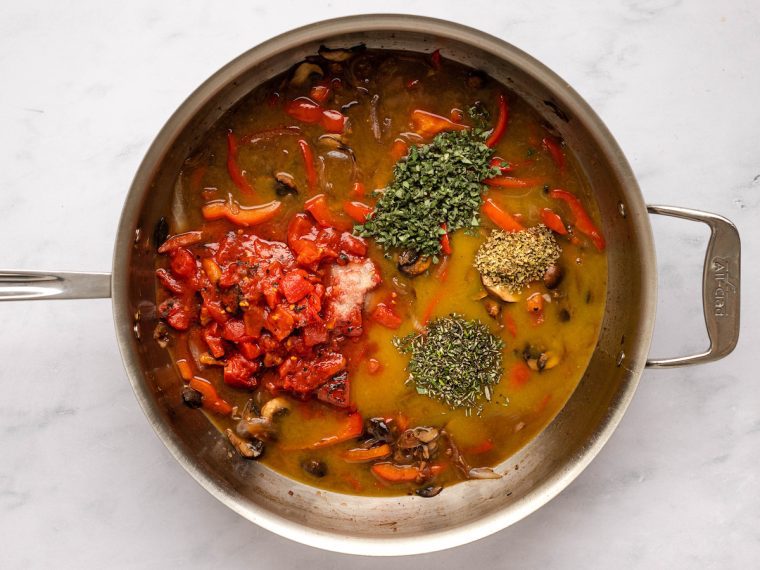
Bring to a boil, then reduce the heat to medium-low and gently simmer, uncovered, for 10 minutes. Add the chicken and any accumulated juices from the plate back to the pot and spoon some of the sauce over it.
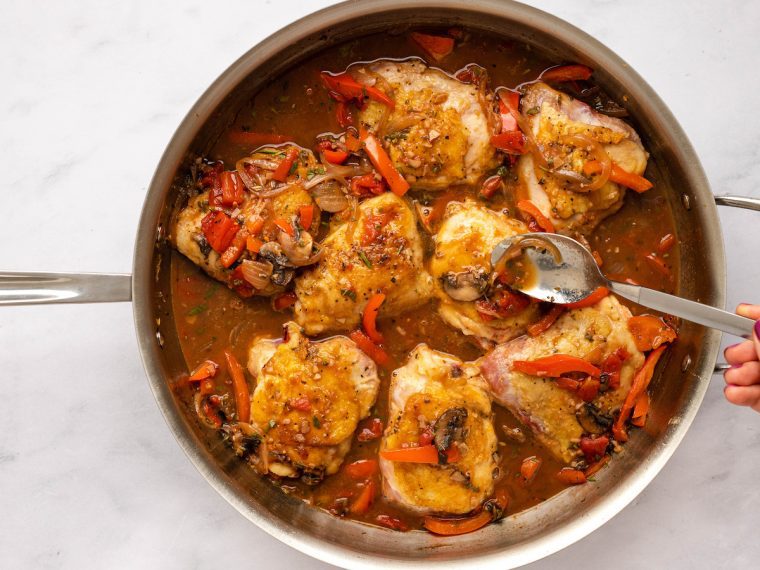
Bring to a simmer, then cover and cook over medium-low heat for about 35 minutes, until the chicken is cooked through or registers 165°F – 170°F on a meat thermometer. Using a slotted spoon, transfer the cooked chicken to a plate. Using a fork and knife, pull the skin off of the chicken and discard.
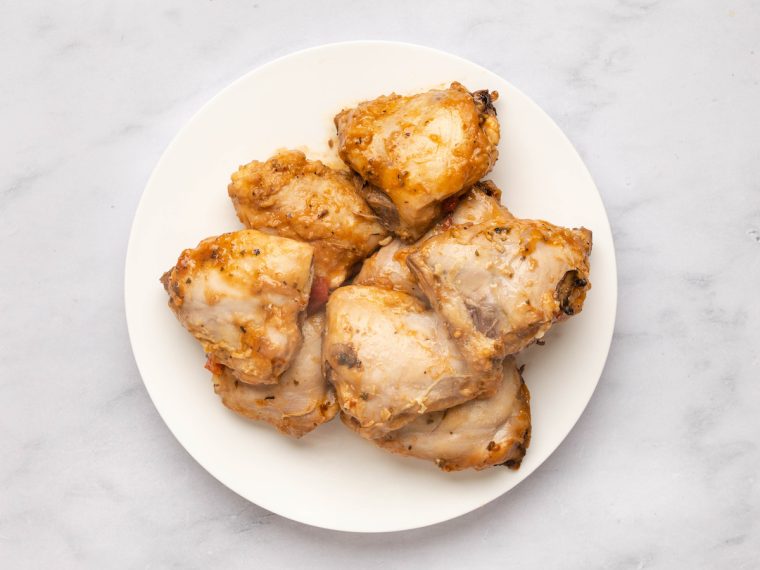
Gently simmer the sauce for a few minutes, or until it is thickened to your liking. Taste and adjust seasoning, if necessary. Add the chicken and any accumulated juices back to the pot and simmer, uncovered, for a few minutes, spooning the thickened sauce over the chicken. Garnish with parsley, if using, and serve.
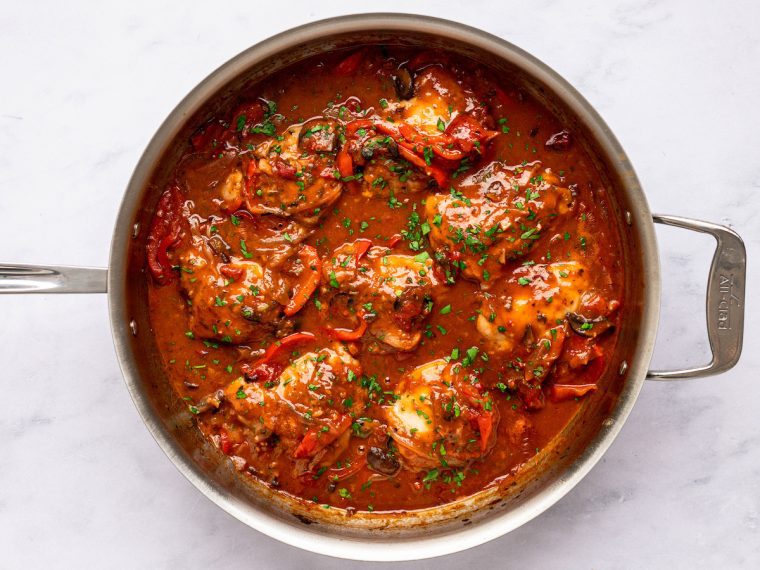
Frequently Asked Questions
Absolutely! The flavors will actually improve if left to sit overnight. To make the recipe ahead, let the chicken cool to room temperature and then store it in the refrigerator for up to 3 days, or freeze in an airtight container for up to 3 months. Before serving, defrost in the refrigerator for 24 hours if necessary, and then reheat on the stovetop over medium-low heat until hot.
When cooking with wine, my advise is always to use something inexpensive but still good enough to drink. Varietals such as Merlot, Pinot Noir, and Chianti are all great options, but you can really use whatever you have on hand. Just be sure to avoid supermarket “cooking wines,” which are filled with salt and preservatives.
Yes, it’s fine to omit the wine. If you feel the dish is lacking acidity at the end of the cooking process, you can add a teaspoon or so of red wine vinegar to balance the flavors.
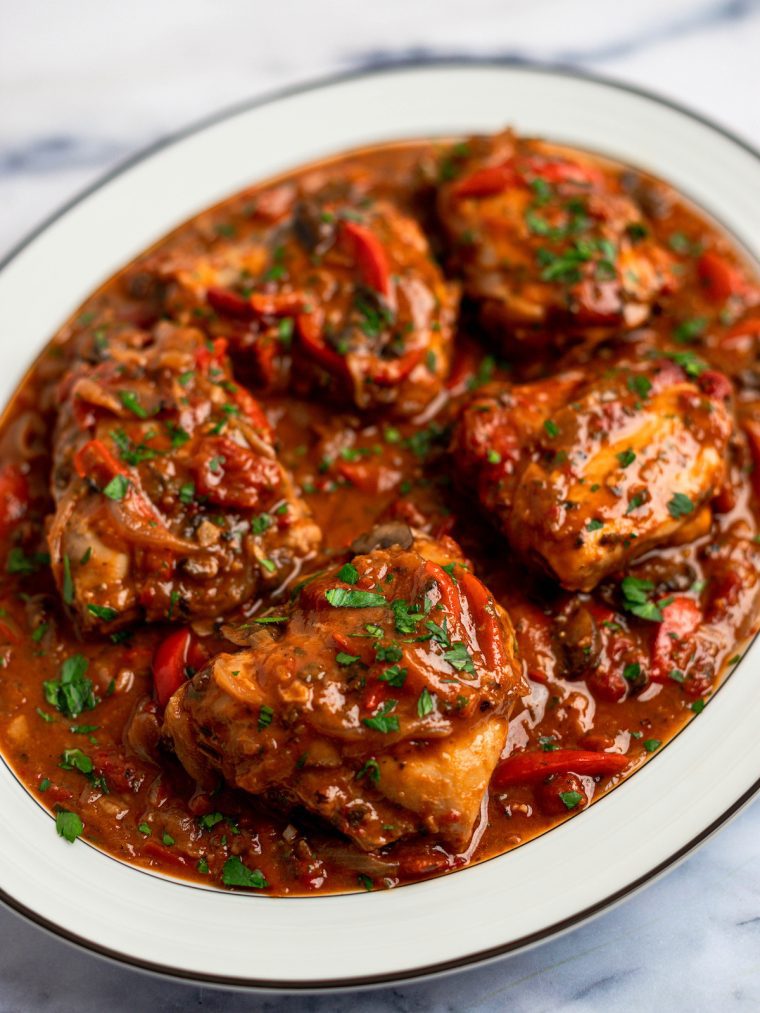
You May Also Like
Video Tutorial
Chicken Cacciatore
A rustic, slow-cooked dish of tender chicken and vegetables in a hearty sauce, chicken cacciatore makes a soul-satisfying meal.
Ingredients
- 8 bone-in, skin-on chicken thighs (3½ to 4 pounds), trimmed of excess skin (see note)
- 2½ teaspoons salt, divided
- ½ teaspoon freshly ground black pepper
- ½ cup all-purpose flour
- 2 tablespoons extra virgin olive oil
- 1 large yellow onion, halved and thinly sliced
- 6 cloves garlic, minced
- 8 ounces bella or cremini mushrooms, sliced
- 2 red bell peppers, cut into ¼-inch-wide strips
- ¾ cup dry red wine (see note)
- 2 cups chicken broth
- 1 (14.5 ounce) can fire-roasted or regular diced tomatoes
- ¼ cup tomato paste
- 2 tablespoons chopped fresh sage
- 1 tablespoon chopped fresh rosemary
- 1 teaspoon dried oregano
- 1 tablespoon honey
- Fresh chopped parsley, for garnish (optional)
Instructions
- Blot the chicken with a paper towel to remove any excess moisture. Season the chicken all over with 1½ teaspoons salt and the pepper. Place the flour on a large plate. Dredge the chicken pieces in the flour, coating all over.
- Heat the oil in a large (5 or 6-qt) Dutch oven or heavy-bottomed, high-sided large skillet over medium-high heat. Brown half the chicken in a single layer, skin side down, until golden and crispy, 5 to 7 minutes. Flip and brown on the other side for 1 to 2 minutes more. Using tongs, transfer the chicken to a large plate; set aside. Repeat with the remaining chicken. Pour off all but about 2 tablespoons of the fat.
- Return the pot to the stove and reduce the heat to medium-low. Add the onions to the pot and cook, stirring occasionally, until they are softened and just starting to brown, about 5 minutes. Add the garlic and cook, stirring constantly, until fragrant, about 1 minute. Do not brown. Add the mushrooms and peppers and increase the heat to medium. Cook for 5 minutes, stirring occasionally until the veggies just begin to soften.
- Add the wine and bring to a boil over high heat. Cook, stirring to scrape the brown bits from the bottom of the pan, until the wine has mostly evaporated, 5 to 6 minutes.
- Add the chicken broth, diced tomatoes, tomato paste, sage, rosemary, oregano, honey, and the remaining 1 teaspoon salt. Bring to a boil, then reduce the heat to medium-low and gently simmer, uncovered, for 10 minutes.
- Add the chicken and any accumulated juices from the plate back to the pot and spoon some of the sauce over it. Bring to a simmer, then cover and cook over medium-low heat for about 35 minutes, until the chicken is cooked through or registers 165°F - 170°F on a meat thermometer.
- Using a slotted spoon, transfer the cooked chicken to a plate. Gently simmer the sauce for a few minutes, or until it is thickened to your liking. Taste and adjust seasoning, if necessary.
- Using a fork and knife, pull the skin off of the chicken and discard. Add the chicken and any accumulated juices back to the pot and simmer, uncovered, for a few minutes, spooning the thickened sauce over the chicken. Garnish with parsley, if using, and serve.
- Note: Sometimes chicken thighs have excess skin and/or fat. Before cooking, using kitchen shears, trim any skin that extends farther than the edges of the chicken thigh, and snip off any excess fat.
- Note: For the wine, use any red (Pinot Noir, Chianti, Merlot, Cabernet Sauvignon, etc.) that is inexpensive but still good enough to drink. Avoid "cooking wines," which are salty and contain additives.
- Make-Ahead/Freezer-Friendly Instructions: Let cool to room temperature and then store in the refrigerator for up to 3 days, or freeze in an airtight container for up to 3 months. Before serving, defrost in the refrigerator for 24 hours if necessary, and then reheat on the stovetop over medium-low heat until hot.
Pair with
Nutrition Information
Powered by ![]()
- Serving size: 4
- Calories: 790
- Fat: 26 g
- Saturated fat: 6 g
- Carbohydrates: 42 g
- Sugar: 16 g
- Fiber: 7 g
- Protein: 88 g
- Sodium: 2,026 mg
- Cholesterol: 377 mg
This website is written and produced for informational purposes only. I am not a certified nutritionist and the nutritional data on this site has not been evaluated or approved by a nutritionist or the Food and Drug Administration. Nutritional information is offered as a courtesy and should not be construed as a guarantee. The data is calculated through an online nutritional calculator, Edamam.com. Although I do my best to provide accurate nutritional information, these figures should be considered estimates only. Varying factors such as product types or brands purchased, natural fluctuations in fresh produce, and the way ingredients are processed change the effective nutritional information in any given recipe. Furthermore, different online calculators provide different results depending on their own nutrition fact sources and algorithms. To obtain the most accurate nutritional information in a given recipe, you should calculate the nutritional information with the actual ingredients used in your recipe, using your preferred nutrition calculator.

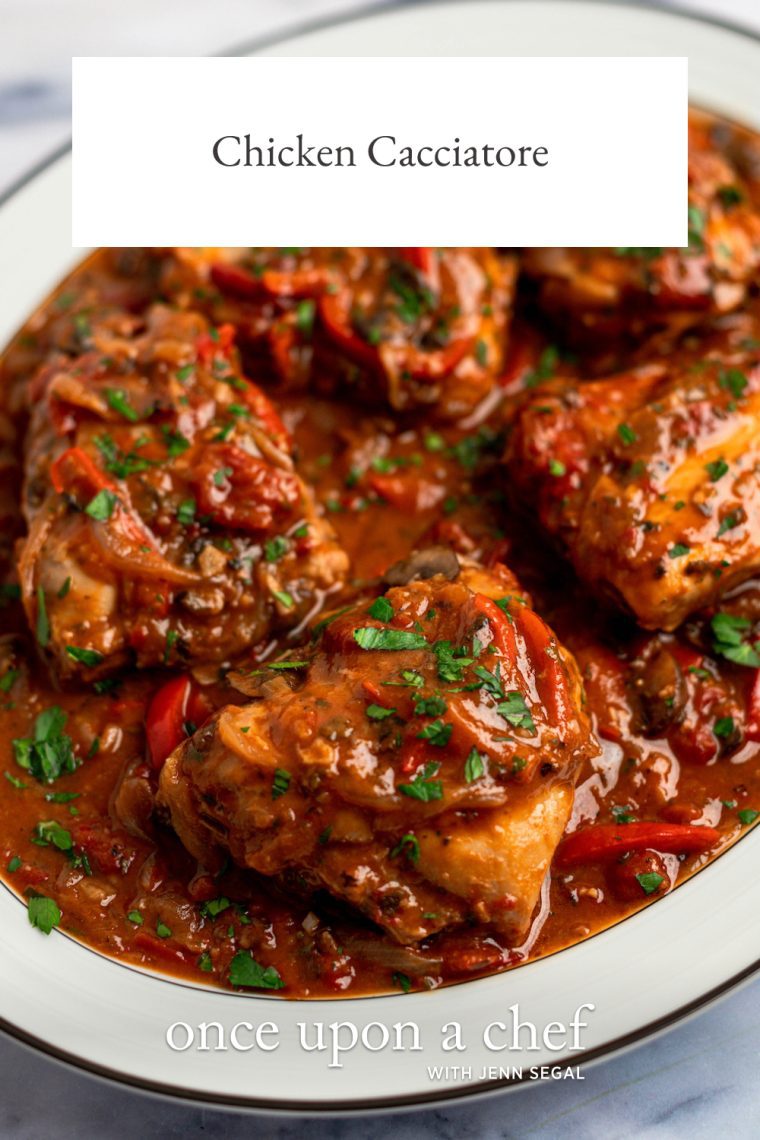
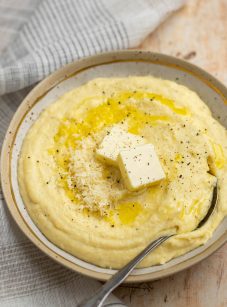
Yet another perfect recipe from Jenn! We had this for dinner last night. It was the leftovers I’d frozen from the last time I made it. Absolutely delicious! I’m not sure what I’d do without your recipes….. they make me a far better cook!
💜
What a delicious dinner! My whole family loved it. Extremely flavorful and comforting. I will definitely be making this again.